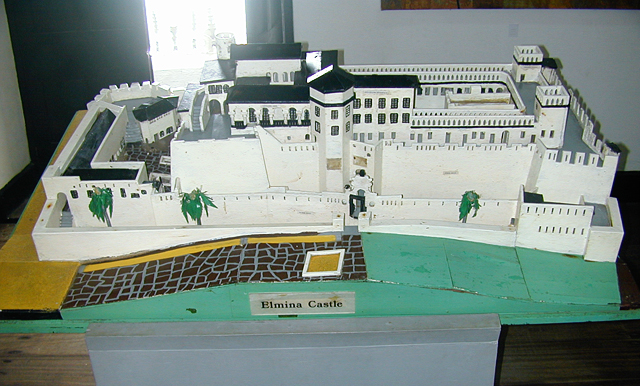
|
Elmina Castle is the oldest existing European building in sub-Saharan Africa. The castle was originally built by the Portuguese in 1482 to be used as a trading post in what was then a very booming trade in gold and other minerals being extracted from Ghanaian lands. Its strategic location gained the Portuguese a trade monopoly and it was highly sought after by other European powers. Many battles were fought for control of the castle and subsequently ownership also fell to the Dutch and then the British. As the trans-Atlantic slave trade grew and the trade in human beings became more profitable, the "storerooms of the castle were converted into dungeons" to house African captives. Captured men and women were brought to Elmina from all over Ghana and other parts of West Africa. After several weeks, sometimes months, of walking (shackled in chains) they would finally arrive at Elmina. Here they would be packed into the dark, cold dungeons, several hundred at a time, with absolutely no room to move, let alone enough air to breathe. These grueling days spent at Elmina would be their final days in Africa. A visit to Elmina will leave you with chills. The castle's bright white exterior stands in contrast to the great darkness concealed behind its walls. Walking through the tunnels and dungeons I was overcome with emotions I am still unable to describe. It is one thing to read about and to view pictures, but the actual experience is another. And knowledge of the great evils perpetrated there will leave you haunted for days. That human beings can commit such evil against each other is a wonder. Yet the greatest irony of it all is the presence of "religion" within the castle walls. There is a church at its very centre and all through the rooms (in the quarters where the slave traders lived) are inscriptions quoting bible verses and statements asking God to "Bless" those who dwell there. |
|
Torwoli S. Dzuali, Destination Ghana |